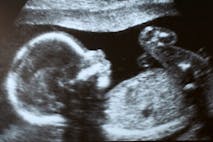
Full term 'miracle' baby born after 'unprecedented' ectopic pregnancy
Bridget Sielicki
·
Abortionist not disturbed by seeing mutilated children “because I’m not deluded about what this whole process is”
A recent story at Esquire chronicled the abortion practice of Willie Parker, an abortionist who commutes from Chicago to Mississippi to commit abortions at the state’s last abortion mill. Mississippi is devoid of any abortionists of its own who are capable of obtaining hospital admitting privileges, a requirement now mandated by law in several states. Consequently, Parker — who boasts an unusually clean record for an abortionist, and was able to obtain privileges nearby — travels to the South to fill in.
Esquire calls Parker’s practice a “ministry,” playing off of the abortionist’s professed Christianity. The author chose to conclude the piece with a chilling look into the heart of Parker’s so-called ministry, following him through the process of examining fetal remains immediately after each abortion.
Reporters have rarely been invited to view this process. Those who have witnessed abortion first-hand report varied reactions (mostly horror, and helplessness), but across the board is the shock that abortion is not what they thought. The tidy phrases and semantics (“reproductive justice,” “products of conception,” even “abortion”) did not prepare them for the reality of dismemberment, gore, tears, pain, “little rib cages.”
It is impossible for reporters to walk away from the experience with any illusions about what abortion really is. When they use terms in their subsequent writing such as, “reproductive rights” after witnessing what that actually means, they can undoubtedly visualize the severed limbs and crushed bodies that comprise that term at its core. Initially, the Esquire reporter opts for a cold, clinical tone to recount the experience:
Article continues below
Dear Reader,
Have you ever wanted to share the miracle of human development with little ones? Live Action is proud to present the "Baby Olivia" board book, which presents the content of Live Action's "Baby Olivia" fetal development video in a fun, new format. It's perfect for helping little minds understand the complex and beautiful process of human development in the womb.
Receive our brand new Baby Olivia board book when you give a one-time gift of $30 or more (or begin a new monthly gift of $15 or more).
After each procedure, [Parker] carries the large glass vacuum bottle into an adjoining room. There he pours the fetal tissue from the bottle into an ordinary kitchen strainer and runs tap water over it, then empties the strainer into a clear Pyrex dish and examines the tissue on a light table.
Among the “uterine contents” that passed over Parker’s light table that day were three sacs, the tiny cocoons containing three small lives that, moments earlier, were nestled in their mother’s womb burgeoning with triplets. The reporter seems unfazed. Then a fetus at six weeks’ gestation that he describes as “lumps of red tissue.” Still, little emotion is conveyed in the writing. But then, the corpse of a nine-week-old fetus is sloughed onto the table:
But then he brings in one that’s nine weeks and there’s a fetus. He points out the scattered parts. “There’s the skull, what is going to be the fetal skull. And there are the eye sockets.”
Floating near the top of the dish are two tiny arms with two tiny hands.
The reporter admits that his invitation into the innermost rooms of that facility was rare. “But today [Parker] made a conscious decision not to hide the truth,” he says, tellingly. The truth. Parker calls this truth a thing that he hopes “people can deal with” at some point. He defaults to bemoaning the “stigma” of abortion — a stigma that is enshrined not by the pro-life movement, but by his own.
The stigma proliferates when abortionists lobby against sonogram laws that force abortionists to provide women with the full knowledge of what they are doing before they go through with an abortion. Typically unable to see the postmortem bodies of their babies, abortionists do not even want women seeing the living, non-gruesome version fluttering on an ultrasound screen. Why? Because it would (rightly) stigmatize their profession in the eyes of their clients. At the end of the day, the abortion industry will protect the stigma fiercely, because failing to do so would put them out of business.
But the reporter admits that, at this point, “it’s hard not to look at those tiny fingers, no bigger than the tip of a toothpick.” Is Parker as disturbed as he is by this experience on a daily basis?
When I recognize whole fetal parts? No. Because I’m not deluded about what this whole process is.
Live Action News is pro-life news and commentary from a pro-life perspective.
Contact editor@liveaction.org for questions, corrections, or if you are seeking permission to reprint any Live Action News content.
Guest Articles: To submit a guest article to Live Action News, email editor@liveaction.org with an attached Word document of 800-1000 words. Please also attach any photos relevant to your submission if applicable. If your submission is accepted for publication, you will be notified within three weeks. Guest articles are not compensated (see our Open License Agreement). Thank you for your interest in Live Action News!

Bridget Sielicki
·
Analysis
Angeline Tan
·
Analysis
Cassy Cooke
·
Politics
Madison Evans
·
Opinion
Nancy Flanders
·
Investigative
Carole Novielli
·
Human Interest
Lauren Enriquez
·
Activism
Lauren Enriquez
·
Activism
Lauren Enriquez
·
Activism
Lauren Enriquez
·
Lauren Enriquez
·